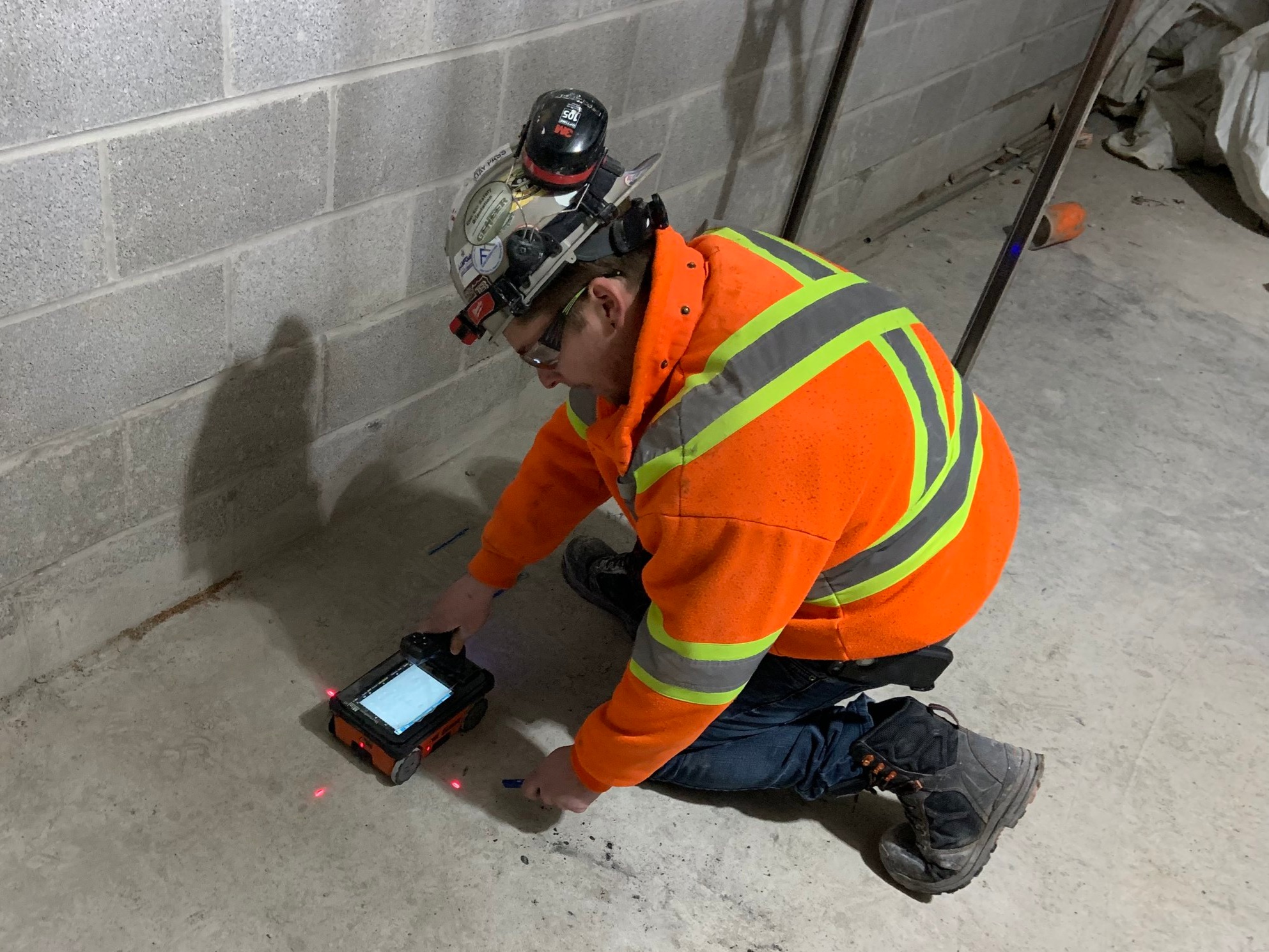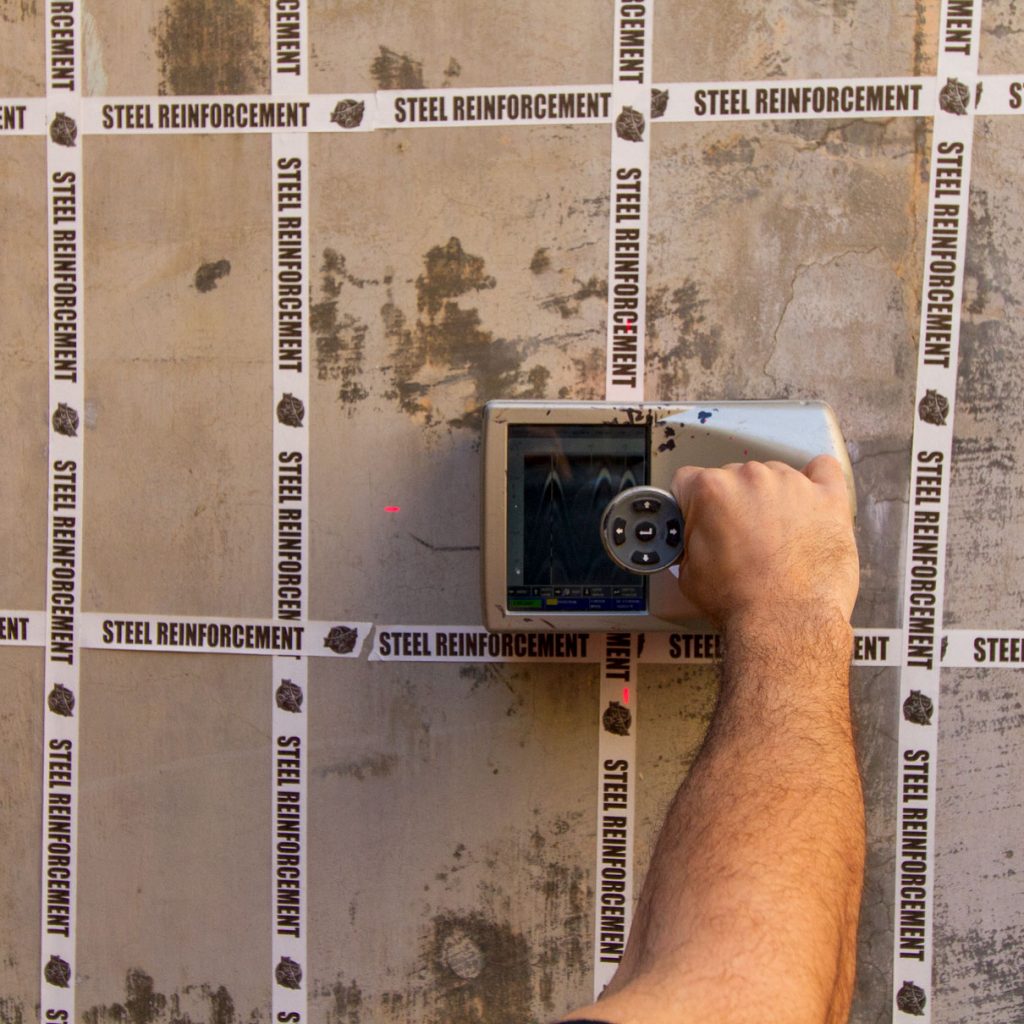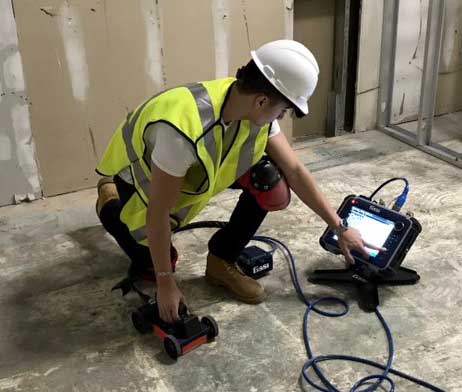Extensive Insights right into Concrete Scanning Procedures
Extensive Insights right into Concrete Scanning Procedures
Blog Article
Introduce the Transformative Power of Concrete Scanning in Making The Most Of Performance and Security
Concrete scanning has emerged as a crucial tool in the construction industry, using unparalleled advantages in enhancing job effectiveness and making sure safety and security criteria. The transformative power of concrete scanning exists in its ability to offer real-time data and in-depth insights, changing just how jobs are prepared and performed.
Relevance of Concrete Scanning
Making certain the architectural honesty and security of building and construction jobs starts with the essential step of carrying out comprehensive concrete scanning. Concrete scanning is a non-destructive approach utilized to detect and map subsurface elements within concrete frameworks. This process is important in recognizing prospective hazards, such as rebar, post-tension cable televisions, and conduits, that might be hidden within the concrete. By making use of advanced modern technologies like ground-penetrating radar (GPR) and electromagnetic induction, construction groups can accurately locate these aspects without causing any kind of damage to the framework.
The value of concrete scanning can not be overemphasized, as it plays an important role in avoiding crashes, lessening job hold-ups, and guaranteeing the lasting resilience of the building and construction. By identifying possible risks prior to the building and construction phase begins, contractors can implement suitable precaution and make informed decisions pertaining to the design and execution of the job. In addition, concrete scanning aids in optimizing task timelines and spending plan by avoiding unexpected expenses and hold-ups that may occur because of unanticipated blockages within the concrete. Inevitably, purchasing detailed concrete scanning is an aggressive approach that boosts both performance and safety in building tasks.
How Concrete Scanning Functions
Concrete scanning operates as an essential tool in construction projects by using innovative innovations to identify and map subsurface components without creating structural damages. Ground Passing Through Radar (GPR) and Electromagnetic Induction (EMI) are two main methods used in concrete scanning. GPR jobs by discharging high-frequency radar pulses into the surface, which get better when they come across subsurface objects or gaps. The time considered the signal to return shows the depth and area of the items. EMI, on the various other hand, utilizes electromagnetic fields to identify differences in material compositions, such as recognizing rebar or conduits within concrete structures.
Throughout the scanning procedure, the information accumulated is evaluated in real-time, permitting prompt recognition of possible threats or obstacles underneath the surface area. By using these innovative modern technologies, concrete scanning significantly decreases the danger of expensive problems and injuries on building websites.
Advantages of Concrete Scanning
Making use of innovative scanning modern technologies in building and construction tasks supplies a multitude of advantages, enhancing both efficiency and safety and security on-site. Among the key advantages of concrete scanning is the capacity to detect and situate ingrained items such as rebar, post-tension cords, and channels precisely. By identifying these elements prior to exploration or reducing into concrete frameworks, the risk of unintentional strikes is significantly minimized, preventing possible injuries to workers and damage to the structure itself. Concrete scanning assists in preparation and creating a lot more successfully, as it provides specific information concerning the area and deepness of architectural components.

Instance Researches: Concrete Scanning Success

In one more instance, a building business made use of 3D concrete scanning to evaluate the condition of maturing concrete structures in a historic building. The thorough scans provided valuable insights into the level of wear and tear and aided focus on maintenance efforts properly. By proactively attending to areas of concern determined via scanning, the firm had the ability to extend the life expectancy of the framework and ensure resident security.
These click here for more instance researches underscore the transformative power of concrete scanning in improving performance, precision, and safety and security in building and construction tasks.
Implementing Concrete Scanning in Projects
Executing advanced scanning innovations during building jobs has become progressively necessary for boosting accuracy and security. By incorporating concrete scanning right into task preparation and implementation, building teams can determine prospective dangers, such as rebar or post-tension cords, concealed within concrete structures. This proactive approach minimizes the risk of accidents, hold-ups, and expensive rework, eventually resulting in much more efficient project timelines and budgets.
To apply concrete scanning properly, job managers ought to work together closely with experienced scanning professionals to determine one of the most ideal scanning strategies for the details task demands. Engaging scanning specialists from the very early stages of a job enables the group to produce comprehensive scanning strategies that address key locations of worry and guarantee extensive data collection.
Moreover, integrating concrete scanning into normal job workflows can simplify decision-making processes, as real-time check information offers immediate understandings into the problem of concrete structures - Concrete Scanning. This data-driven method promotes educated analytic and makes it possible for teams to make changes without delay, cultivating a culture of efficiency and safety throughout the task lifecycle

Final Thought
To conclude, concrete scanning plays a vital duty in improving performance and safety in building jobs. By using advanced technology to map and spot out underlying structures within concrete, this process assists to stop costly blunders, guarantee architectural integrity, and reduce dangers on site. With the capability to reveal surprise elements and provide accurate data, concrete scanning proves to be an important device for maximizing project outcomes and maximizing overall success.
Concrete scanning is a non-destructive method used to find and map subsurface components within concrete frameworks. In addition, concrete scanning assists in enhancing project timelines and budget plan by avoiding unexpected costs and delays that might emerge due to unanticipated blockages within the concrete. One significant situation research you can try these out study entails a massive remodelling job where concrete scanning played a crucial duty in making sure job success.In another Your Domain Name case, a building business utilized 3D concrete scanning to assess the problem of maturing concrete frameworks in a historic structure. By integrating concrete scanning right into job planning and implementation, building teams can recognize possible dangers, such as rebar or post-tension cords, hidden within concrete frameworks.
Report this page